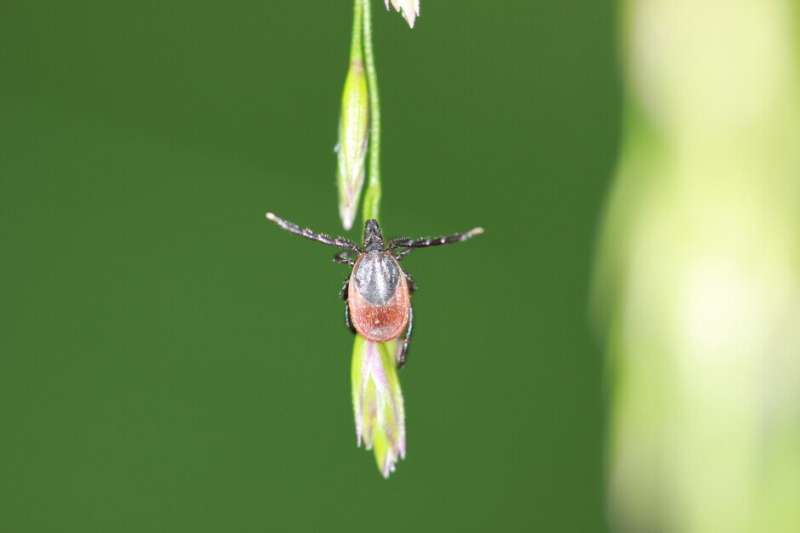The tick is a parasite that feeds on blood. The good news is that a tick feeds only three times in its lifetime.
The tick has a lifespan of two to eight years and spends most of its time waiting. It waits to transform from larva to nymph after its first meal. It waits to become an adult after the second meal. The third meal is the last.
The tick larva is a tiny tick, not like elongated butterfly caterpillars, but as small as the smallest dot you can make with a pencil. As soon as it has eaten its fill, it falls to the ground. After a while it goes dormant to develop into a nymph.
The nymph goes through the same cycle: finds a meal, falls to the ground, hibernates and transforms into an adult.
Sucks blood while mating
Between meals, the tick waits to mate. The male tick waits for a potential mate in the fur of an animal. And while the female tick sucks blood, the male takes the opportunity to mate.
After mating, the female waits a few days before laying about 1,000 eggs. Then its life's task is done, and it dies. Now new ticks are on the way.
Every spring and summer these headlines appear in the newspapers. The tick has become bigger. It has become more dangerous. And now it's coming to get you.
Myths about ticks
UiA's associate professors Randi Eikeland and Vivian Kjelland are experienced tick researchers.
Eikeland is a doctor and neurologist and a specialist in tick-borne diseases. Her research is particularly concerned with how Lyme disease affects the nervous system.
Kjelland is a molecular biologist and tick researcher and has, among other things, studied which pathogens ticks carry.
The researchers say:
- No, the tick hasn't gotten bigger.
- No, it can't fly.
- No, it can't jump. No, it won't come after you.
The tick researchers tell us there are things we should be aware of:
- Yes, ticks can carry bacteria and viruses that could cause serious illnesses.
- Yes, you have to grab around it and pull it out to get rid of it.
- No, it cannot be brushed away like a mosquito, ant or a fly.
- No, it cannot be washed off in the shower.
- No, it won't die and won't let go if you go swimming in the sea.
- No, it doesn't die after sucking blood, it falls to the ground and if it is not already an adult, it transforms into a nymph or an adult tick.
- Yes, it will survive in the washing machine if you wash your clothes at 40 degrees or less.
- Yes, the male also sucks blood, but less than the female, and it will roam around more on its host because it is looking for a female tick to mate with.
In forests and gardens
The tick lives in the forest. It likes moist deciduous woodland and tall grass, but also open grassland and heather.
You can easily find it in your garden too. There are a lot of ticks especially along the coast in Eastern Norway, Agder and Rogaland. Tick season is from April to September.
Pets may crawl into bushes and thickets and bring them home with them.
Headless spider that feeds on blood
The tick has no eyes or nose. It has a biting tool where other arachnids have a head.
Kjelland points out that it is not an insect but belongs to the spider family and is a parasite.
The tick feeds on the blood of mammals, birds and reptiles. It needs blood in its intestines to survive and grow.
- Karlston and Mutton
-

 2
2



Recommended Comments
There are no comments to display.
Join the conversation
You can post now and register later. If you have an account, sign in now to post with your account.
Note: Your post will require moderator approval before it will be visible.